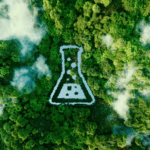The production of plastic has increased drastically in recent years. In 2023, 413.8 million metric tonnes of plastic was produced worldwide, a huge jump from the 2 million tonnes produced in 1950. This surge in production underscores the urgent need for microplastic testing to address the mounting environmental impact caused by improper plastic waste management.
Although plastic is a valuable material, its mismanagement has turned it into a significant environmental impact. Microplastic testing is critical in identifying and mitigating the widespread contamination caused by these tiny particles, which accumulate in marine, freshwater, and terrestrial ecosystems. The growing focus on environmental impact has prompted stricter regulations, making microplastic testing essential for monitoring pollution levels and ensuring compliance with global standards.
By prioritising solutions to minimies the environmental impact of plastic waste, industries can leverage microplastic testing as a key tool in protecting ecosystems, supporting sustainability, and safeguarding public health.
What are microplastics?
Microplastics can be formed unintentionally, for example during the wear and tear of larger pieces of plastic, such as tyres and synthetic clothing. They can also be formed intentionally for use in products with specific purposes, like body scrubs, fertilisers, and glitters.
The European Chemicals Agency (ECHA) defines microplastics as solid plastic particles composed of a mixture of polymers and functional additives, typically smaller than 5mm.
Why are microplastics a problem?
Microplastics do not biodegrade, therefore they remain in the environment where they accumulate. Microplastics have been found in marine, freshwater, and terrestrial ecosystems. Due to their widespread nature, they are often ingested by animals, and subsequently consumed as food by humans.
Studies have shown that microplastics can affect various systems in the human body, such as the digestive, respiratory, endocrine, reproductive, and immune systems.
Why is microplastic testing necessary?
Testing for microplastics is important for 3 main reasons:
• Environmental monitoring – to give us an idea of the extent of microplastic contamination, and its impact on ecosystems
• Human health concerns – to assess exposure risks and create strategies to protect public health
• Regulatory compliance – Government and international organisations are introducing stricter requirements for microplastics (e.g. REACH, AGEC). Testing plays an important role in regulatory compliance
Data from microplastic testing can help governments create more effective policies and targets. It also drives innovation in developing alternatives to conventional plastics, and improving their waste management.
As concerns around plastic pollution continue to grow, microplastic testing will play a key role in safeguarding the environment and supporting sustainability efforts.
How can Eurofins help?
Eurofins is committing to staying at the forefront of the development of new methods to assist our customers with monitoring all “compounds” of concern, including microplastics.
Eurofins has laboratories across the globe that test for microplastics in a wide variety of environmental samples. We can assist customers in getting the data they need to make the correct decisions related to these potentially harmful contaminants.
Furthermore, we can quantify the number of microplastics, using spectroscopy (Raman, FTIR and LDIR), and report the total mass of particles, using thermoanalytical methods (TD-GC/MS and Pyrolysis-GC/MS).
For more information, contact us today to learn how we can support your business.





